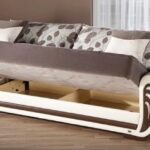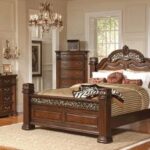4 Reasons These Designers Are Totally Over Farmhouse Decor
4 Reasons These Designers
4 Reasons These Designers Are Totally Over Farmhouse Decor

Some version of the farmhouse decorating style has been in fashion since the first American pioneers set up their homesteads with simple furnishings crafted by hand and cast iron kettles hanging over an open fire.
Fast forward more than 150 years later, when super couple Chip and Joanna Gaines from Waco, Texas catapulted farmhouse chic to new heights with their Magnolia twist on down-home decorating. Now you can hardly find a big-box store that doesn’t showcase its own pieces meant to entice today’s homeowners into waxing nostalgic about a simpler time.
The explosiveness of the trend has roots in the economy as well.
“After the recession in 2008, people didn’t want to look like they were spending a lot of money. What came about was people still wanted to be out together, go to restaurants, but they didn’t want to be the flashy ones,” says New York City designer Lucy Harris of Lucy Harris Studios. “They wanted to be comfortable. Restaurants started using design elements that felt authentic. So exposed filament light bulbs and white subway tile in restaurants came about, and farmhouse came from there.”
As with so many things, when a style becomes the norm, people tend to move on. And farmhouse looks like it is showing signs of having worn out its folksy welcome. Is it going the way of the dinosaur? No way. It likely will hold on, especially in certain areas of the country. But some interior designers and decorators say enough is enough on at least some aspects of the look.
1. The Writing Is on the Wall
At first, it was quaint to have rustic signs, maybe made of old palettes, that showcased a favorite saying, scripture or idea here and there in a home. And then, it became a little silly.
Signs in the living room, reminding us to “Live, Laugh, Love.” A wall hanging in the bathroom exhorting you to “Be a sweetie; Wipe the seatie.” Or worse, big, wood letters in every single room announcing exactly where you are. Lest you forget and start looking for the fridge in the powder room.
“You can totally go too far in farmhouse,” says Central Texas interior designer Audrey Konkel. “Modern farmhouse is more streamlined, more simplistic. Then there’s Hobby Lobby farmhouse” with signs for everything.

2. We Don’t Live in a Barn
Sliding barn-style doors can work well in a tight space and add a little country flair. But not all doors are created equal, and this style definitely favors form over function.
Rande Leaman, of Los Angeles’ Rande Leaman Interior Design, says, “Barn doors are something that we will look back on and say ‘Oh my gosh! That was 2019, 2020 and before!’ ”
These doors offer little to no privacy because the sides aren’t sealed in the slightest. This allows sound — and, sadly, odor — to creep out from areas you are trying to keep tucked away. That isn’t something you want to find out after installing one of these pricey items.
“The last one I put in, the client wanted it on the master bathroom,” Leaman says. “I said ‘You will have a space there, a little crack, if you aren’t comfortable with it …” and they weren’t. They kept it because it was so expensive, but they didn’t like it.”
Have little kids in the house? Pass on the sliding door. “Practically speaking, especially with little kids. They love to push those doors on the track and they go flying like it’s a fun toy. As a mom, that would make me nervous,” Leaman says.
3. Has That Shiplap Sailed?
If the popular HGTV show “Fixer Upper” brought anything into the home decor lexicon, it is “shiplap.” What is that, exactly? It is a sort of wood plank pattern using special grooves that, when snapped together, provides great protection against water and weather when used on the outside of a house.
It is found in walls of some older homes when the drywall is removed during renovations. That discovery can add depth to the character of such an adobe, but when it is installed in a new build? That’s a disconnect that doesn’t add up for some.
“My mantra is that you have to design for the home and the location. I want to be true to the house and the surroundings,” says Leaman. “You have to pay attention to the location, the bone of the house. As a designer, that gives us so much information.”
As with all design trends, when every house has shiplap, it ceases to be an unexpected discovery or unique home trait. It also might not be sending the message you are hoping for.
Courtney Eads of Traci Connell Interiors in Dallas says, “[Shiplap] seems to ‘cheapen’ the design or date it. It’s something that a DIY person can do, and you don’t hire a designer to create a DIY experience.”
4. Doesn’t Play Well With Others
Many people have a mixed bag of personal tastes and styles that is reflected in their home. A blend of modern and mid-century, bohemian and traditional, for instance. But what combines well with a farmhouse aesthetic? A little more farmhouse.
There is definitely such a thing as too much of a good thing. Leaman says, “It is getting a little tired and overdone because people sort of beat it to death. The kitschy signs, the farm-themed things in the kitchen all together start to kind of become dated.”
Looks like it could be time to put aspects of this home trend out to pasture.




